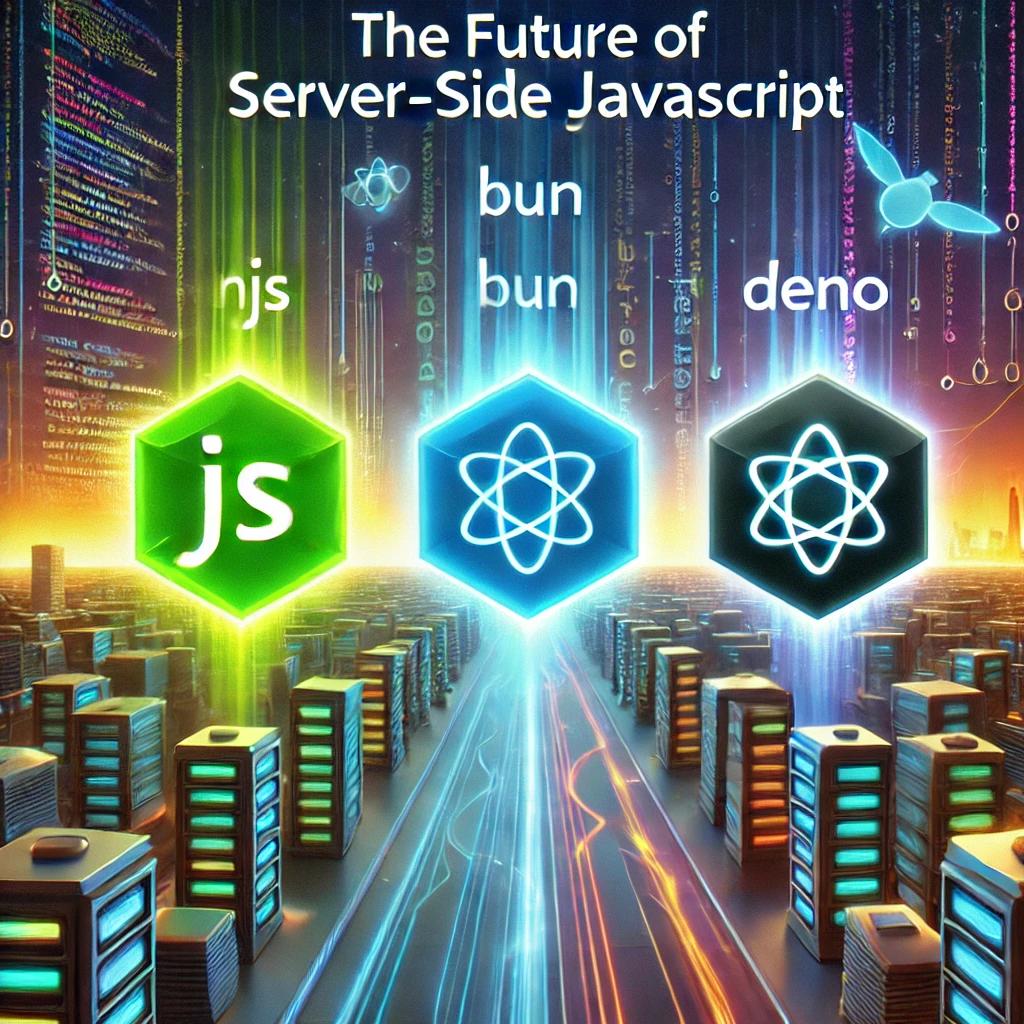The 2024 Roadmap to Becoming a MERN Stack Full Stack Developer: A Step-by-Step Guide

Becoming a full-stack developer is an exhilarating journey that promises a rewarding career. This article will guide you on how to become a full-stack developer specializing in MERN stack in the year 2024, providing a monthly breakdown of learning targets and chapter topics.
January: Diving into Web Development Basics
- Understanding Web Development: Fundamentals of how the web works, the role of web developers, and an overview of front-end and back-end development.
- HTML and CSS Fundamentals: Master the basics of HTML5 and CSS3, from creating a simple webpage to styling it.
- Introduction to JavaScript: Familiarize yourself with JavaScript syntax and basic programming concepts.
February: Solidifying JavaScript Proficiency
- Advanced JavaScript: Exploring topics such as closures, promises, and asynchronous programming.
- JavaScript Testing: Basics of testing in JavaScript using tools like Jest.
- JavaScript Libraries and Frameworks: An overview of how libraries and frameworks can enhance your JavaScript development.
March: Exploring Node.js and the Server-Side Environment
- Introduction to Node.js: Understanding Node.js and its runtime environment.
- Working with Node.js: Learn how to handle file systems, databases, and networking in Node.js.
- Building a Simple Server with Node.js: A hands-on project to solidify your Node.js understanding.
April: Diving Deeper into the Back-End with Express.js
- Introduction to Express.js: Understand Express.js and how it simplifies server-side development.
- Creating a REST API with Express.js: Learn the process of building a REST API with Express.js.
- Express.js Best Practices: Learn about security, performance, and testing in Express.js.
May: Database Mastery with MongoDB
- Introduction to MongoDB: Explore MongoDB’s document-oriented database structure and its benefits.
- CRUD Operations in MongoDB: Learn to create, read, update, and delete data in MongoDB.
- Integrating MongoDB with Node.js and Express.js: Learn to connect MongoDB with your back-end server.
June: Linking the Back-End and Front-End with React.js
- Understanding React.js: Explore React’s component-based structure and its benefits for front-end development.
- Building a User Interface with React.js: Learn to create interactive UIs using React.
- State Management in React.js: Understand concepts like props, state, and hooks in React.
July: Advanced Concepts in React.js
- Routing in React.js: Learn how to handle routing in your React applications using React Router.
- Testing React.js Apps: Learn how to use tools like Jest and React Testing Library to test your React applications.
- Performance Optimization in React.js: Learn how to optimize your React application for better performance.
August: Next Level Development with Redux
- Understanding Redux: Learn what Redux is and why it is used in managing application state.
- Implementing Redux in a React Application: Learn how to add Redux to your React application for state management.
- Middleware in Redux: Learn about middleware in Redux and how it can be used to handle asynchronous actions.
September: Exploring MERN Stack Development
- Understanding MERN Stack: Get a complete understanding of MERN Stack and its uses.
- Building a MERN Stack Application: Apply your skills to build a full-stack application using MERN Stack.
- Best Practices in MERN Stack Development: Understand the best practices and principles for MERN Stack development.
October: Mastering MERN Stack Authentication
- User Authentication in MERN Stack: Learn how to implement user authentication in your MERN Stack application.
- Role-Based Access Control in MERN Stack: Understand how to implement role-based access in a MERN Stack application.
- Security in MERN Stack: Learn about security considerations and best practices when developing a MERN Stack application.
November: Scaling MERN Stack Applications
- Understanding Microservices Architecture: Learn about the microservices architecture and how it can be used to scale MERN Stack applications.
- Implementing Microservices in MERN Stack: Learn how to implement a microservices architecture in your MERN Stack application.
- MERN Stack Deployment and Monitoring: Understand how to deploy and monitor a MERN Stack application.
December: The Road Ahead as a MERN Stack Developer
- Interview Preparation for MERN Stack Roles: Tips and guidance on how to prepare for MERN Stack developer interviews.
- Continuous Learning and Improvement: How to keep your skills sharp and stay updated with evolving trends in MERN Stack.
- Building a Portfolio as a MERN Stack Developer: Guidance on how to build a strong portfolio showcasing your MERN Stack projects.
By the end of this roadmap, you will have a well-rounded understanding of MERN Stack and will be ready to embark on a rewarding career as a full-stack developer. Stay persistent, keep practicing, and don’t forget to enjoy the journey!

let’s delve a bit deeper into the learning objectives for the first four months.
January: Diving into Web Development Basics
1. Understanding Web Development
Start your journey by gaining a comprehensive understanding of web development. Learn how the internet works and familiarize yourself with concepts like client-server communication, HTTP/HTTPS protocols, and DNS. Gain an insight into the role of web developers and how they create and maintain websites.
2. HTML and CSS Fundamentals
Dive into the world of HTML (Hypertext Markup Language) and CSS (Cascading Style Sheets). HTML allows you to structure your web content, while CSS gives you the power to style and layout your web pages. By the end of this module, you should be able to create a simple webpage with text, links, images, and forms, and style it using CSS.
3. Introduction to JavaScript
JavaScript is the programming language that breathes life into your websites, making them interactive. Understand JavaScript’s syntax, learn to write and debug JavaScript code, and grasp fundamental programming concepts such as variables, data types, loops, conditionals, functions, and arrays.
- Tips: Start by understanding the structure of HTML and the styles in CSS. Try to code a simple webpage and make it look appealing using CSS.
- Resources: W3Schools (HTML, CSS), Mozilla Developer Network (MDN)
- Study Techniques: Practice makes perfect – code along with tutorials and then try to build simple pages on your own.
- W3Schools HTML: https://www.w3schools.com/html/
- W3Schools CSS: https://www.w3schools.com/css/
- Mozilla Developer Network (MDN) HTML: https://developer.mozilla.org/en-US/docs/Web/HTML
- Mozilla Developer Network (MDN) CSS: https://developer.mozilla.org/en-US/docs/Web/CSS
February: Solidifying JavaScript Proficiency
1. Advanced JavaScript
After getting comfortable with JavaScript basics, it’s time to dive into advanced JavaScript concepts. Topics to focus on include ES6 features, closures, scopes, hoisting, and asynchronous programming with promises and async/await.
2. JavaScript Testing
Quality assurance is crucial in web development. Learn about automated testing in JavaScript, how to write unit tests, and use testing frameworks like Jest. Understand the concepts of Test-Driven Development (TDD) and Behaviour-Driven Development (BDD).
3. JavaScript Libraries and Frameworks
Explore how JavaScript libraries and frameworks can supercharge your development process. Get introduced to popular ones like React.js, Angular.js, Vue.js, and understand how they differ.
- Tips: Break down problems into smaller tasks. Start solving each task one at a time. This will make debugging easier.
- Resources: Eloquent JavaScript (Book), JavaScript.info, MDN JavaScript Guide
- Study Techniques: Use flashcards for memorizing JavaScript methods and properties.
- Eloquent JavaScript (Book): https://eloquentjavascript.net/
- JavaScript.info: https://javascript.info/
- MDN JavaScript Guide: https://developer.mozilla.org/en-US/docs/Web/JavaScript/Guide
March: Exploring Node.js and the Server-Side Environment
1. Introduction to Node.js
Node.js is a JavaScript runtime that allows you to run JavaScript on the server side. Understand the Node.js architecture, event-driven programming, and its non-blocking I/O model. Learn about Node Package Manager (NPM), and how it can be used to manage and install packages.
2. Working with Node.js
Get hands-on with Node.js. Learn how to handle file systems, read and write data, manage databases, and handle network communication in Node.js. Get familiar with popular Node.js libraries like Express.js, and database drivers for MongoDB and SQL.
3. Building a Simple Server with Node.js
Consolidate your Node.js knowledge by creating a simple server. This will help you understand the flow of data, the structure of a Node.js application, and how to handle different types of requests.
- Tips: Understand how asynchronous code works in Node.js. Practice callbacks, promises, and async/await.
- Resources: Node.js Documentation, NodeSchool.io, The Node Beginner Book
- Study Techniques: Build a simple API. Try to fetch data from it and handle errors.
- Node.js Documentation: https://nodejs.org/en/docs/
- NodeSchool.io: https://nodeschool.io/
- The Node Beginner Book: https://www.nodebeginner.org/
April: Diving Deeper into the Back-End with Express.js
1. Introduction to Express.js
Express.js is a minimal and flexible Node.js web application framework that provides a robust set of features for web and mobile applications. Understand how Express.js simplifies server-side development and helps you manage routes, requests, and views.
2. Creating a REST API with Express.js
Learn to develop a REST (Representational State Transfer) API (Application Programming Interface) with Express.js. Get familiar with the different HTTP methods (GET, POST, PUT, DELETE) and understand how they map to database operations.
3. Express.js Best Practices
Ensure your application’s security, performance, and maintainability by adopting best practices. Learn about concepts like error handling, logging, security measures (like preventing cross-site scripting attacks), and performance optimization in Express.js. Explore how to write tests for your Express.js applications to ensure they behave as expected.
Remember that consistent practice is key. Implement the concepts learned in small projects, enhance them as your understanding improves, and you will be one step closer to becoming a MERN Stack Full Stack Developer.
- Tips: Understand how routes work in Express.js. Learn how to send different responses for different routes.
- Resources: Express.js Documentation, Traversy Media’s Express.js Crash Course (YouTube)
- Study Techniques: Try building a RESTful API with CRUD operations.
Let’s continue with the roadmap from May to August.
- Express.js Documentation: https://expressjs.com/
- Traversy Media’s Express.js Crash Course (YouTube): https://www.youtube.com/watch?v=L72fhGm1tfE

May: Database Mastery with MongoDB
1. Introduction to MongoDB
In this month, shift your focus to MongoDB, a popular NoSQL database. Understand the basics of MongoDB, its schema-less nature, and how it differs from traditional SQL databases. Dive into the architecture of MongoDB, its various data types, and the advantages of its document-oriented structure.
2. CRUD Operations in MongoDB
Master the four basic operations of persistent storage: Create, Read, Update, and Delete (CRUD). Learn how to use MongoDB shell, perform CRUD operations in MongoDB, and understand its query language. This knowledge is fundamental to manipulate data stored in MongoDB.
3. Integrating MongoDB with Node.js and Express.js
Bring together your knowledge of MongoDB, Express.js, and Node.js. Learn how to connect a MongoDB database to your Express.js server using MongoDB’s native Node.js driver or Mongoose. Build a simple application that reads from and writes to the database.
- Tips: Learn about NoSQL databases and how MongoDB differs from SQL databases. Practice writing MongoDB queries.
- Resources: MongoDB University, The Little MongoDB Book
- Study Techniques: Implement a database for your API. Practice fetching, creating, updating, and deleting data.
- MongoDB University: https://university.mongodb.com/
- The Little MongoDB Book: https://github.com/karlseguin/the-little-mongodb-book
June: Linking the Back-End and Front-End with React.js
1. Understanding React.js
React.js is a library for building user interfaces, particularly single-page applications. Understand the benefits of React.js, how it uses a virtual DOM to improve performance, and its component-based structure. Learn about JSX (JavaScript XML), a syntax extension for JavaScript that makes writing React components easier.
2. Building a User Interface with React.js
Learn to build dynamic user interfaces with React. Get hands-on experience with creating components, handling events, and managing component state. You should be able to build a basic React application by the end of this module.
3. State Management in React.js
Delve into more advanced concepts like props and state, hooks, and context API. Understand when to use state and how to pass props to child components. Learn about the lifecycle of a component and how to use React’s built-in hooks for side effects and state management.
- Tips: Understand how components in React.js work. Learn about component lifecycle methods and when to use them.
- Resources: React.js Documentation, FullStackOpen, Tyler McGinnis’s React Bootcamp
- Study Techniques: Build a simple interactive UI with components. Try to pass data through props.
- React.js Documentation: https://reactjs.org/docs/getting-started.html
- FullStackOpen: https://fullstackopen.com/en/
- Tyler McGinnis’s React Bootcamp: https://ui.dev/react/
July: Advanced Concepts in React.js
1. Routing in React.js
Websites typically have multiple pages. Learn how to implement routing in your React applications using React Router. Understand the concepts of route parameters, nested routes, and programmatically navigating routes.
2. Testing React.js Apps
Testing is an integral part of the development process. Learn how to use tools like Jest and the React Testing Library to write unit and integration tests for your React applications. Understand the principles of testing user interfaces.
3. Performance Optimization in React.js
As applications grow, performance optimization becomes necessary. Learn how to use React’s built-in tools to optimize performance, such as using the React.memo function for memoization, and the useCallback and useMemo hooks to avoid unnecessary re-renders.
- Tips: Learn about routing and how to use it in a single-page application. Understand the concept of lifting state up.
- Resources: React Router Documentation, Kent C. Dodds’s Epic React
- Study Techniques: Build a multi-page application using React Router. Practice using state and props.
- React Router Documentation: https://reactrouter.com/
- Kent C. Dodds’s Epic React: https://epicreact.dev/

August: Next Level Development with Redux
1. Understanding Redux
Redux is a predictable state container for JavaScript apps that helps you write applications that behave consistently. Understand what Redux is, its three principles (single source of truth, state is read-only, changes are made with pure functions), and why it’s used for managing application state.
2. Implementing Redux in a React Application
Learn how to add Redux to your React application. Understand actions, reducers, and the Redux store. Create actions to describe what happened in the app, and reducers to specify how the app’s state changes in response.
3. Middleware in Redux
Middleware provides a third-party extension point between dispatching an action and the moment it reaches the reducer. Learn about middleware in Redux, and how it can be used to handle asynchronous actions and log every action. Understand popular Redux middleware like Redux Thunk and Redux Saga.
Remember, the more you practice and apply what you’re learning, the better you’ll understand these concepts. Build mini-projects to apply and reinforce your knowledge as you move forward.
- Tips: Understand the concept of a single source of truth in Redux. Learn how to handle async actions in Redux.
- Resources: Redux Documentation, Dave Ceddia’s Redux Course
- Study Techniques: Implement Redux in your React application. Try to fetch data from an API and store it in Redux.
Here’s the learning plan for the final part of the year, covering September to December.
- Redux Documentation: https://redux.js.org/
- Dave Ceddia’s Redux Course: https://daveceddia.com/redux-course/
September: Exploring MERN Stack Development
1. Understanding MERN Stack
Now that you’ve explored the individual components of the MERN Stack (MongoDB, Express.js, React.js, Node.js), it’s time to understand how they all fit together. Appreciate the power of this full-stack JavaScript development platform and its benefits.
2. Building a MERN Stack Application
Put your knowledge into practice by building a full-stack application using MERN. Begin by creating a simple back-end API with Express.js and MongoDB, and then develop a front-end with React.js that communicates with the back-end.
3. Best Practices in MERN Stack Development
Dive into the best practices of MERN Stack development to produce maintainable, performant, and secure applications. This includes proper error handling, code structuring, data validation, testing, and more.
- Tips: Learn how to connect a React.js front-end with an Express.js back-end. Practice fetching data from your API in your React.js application.
- Resources: MERN Stack Tutorial (Academind, YouTube), Full Stack Open
- Study Techniques: Build a full-stack MERN application. Try to implement CRUD operations.
- MERN Stack Tutorial (Academind, YouTube): https://www.youtube.com/watch?v=7CqJlxBYj-M
- Full Stack Open: https://fullstackopen.com/en/
October: Mastering MERN Stack Authentication
1. User Authentication in MERN Stack
Learn how to implement user authentication in your MERN Stack application. Understand how to securely store user credentials, handle user registration and login, and manage user sessions.
2. Role-Based Access Control in MERN Stack
Take a step further into security by implementing role-based access control (RBAC) in your MERN Stack application. Understand how to provide different user roles with different levels of access to various parts of your application.
3. Security in MERN Stack
Discover the various security vulnerabilities that can affect a MERN Stack application, such as Cross-Site Scripting (XSS), Cross-Site Request Forgery (CSRF), and SQL Injection. Learn how to protect your application from these common security threats.
- Tips: Understand how to store passwords securely. Learn about JSON Web Tokens (JWT) and how to use them for authentication.
- Resources: Web Dev Simplified’s JWT Authentication Tutorial (YouTube), The Net Ninja’s JWT Authentication Tutorial (YouTube)
- Study Techniques: Implement user authentication in your MERN Stack application. Try to secure your routes.
- Web Dev Simplified’s JWT Authentication Tutorial (YouTube): https://www.youtube.com/watch?v=mbsmsi7l3r4
- The Net Ninja’s JWT Authentication Tutorial (YouTube): https://www.youtube.com/watch?v=7nafaH9SddU

November: Scaling MERN Stack Applications
1. Understanding Microservices Architecture
Delve into the world of microservices. Learn about this architectural style that structures an application as a collection of services that are easy to maintain and test, loosely coupled, organized around business capabilities, and can be independently deployed.
2. Implementing Microservices in MERN Stack
Now, take what you learned about microservices and apply it to your MERN Stack applications. Learn how to break your applications into smaller, more manageable services that can be developed and deployed independently.
3. MERN Stack Deployment and Monitoring
Learn about the various deployment options available for MERN Stack applications and how to choose the one that best suits your application’s needs. Understand how to monitor your application’s performance, catch and debug errors, and ensure your application is always running smoothly.
- Tips: Understand the concept of microservices. Learn how to handle inter-service communication.
- Resources: Microservices with Node JS and React (Stephen Grider, Udemy), Building Microservices (Book by Sam Newman)
- Study Techniques: Try to break down your MERN Stack application into microservices. Implement communication between them.
- Microservices with Node JS and React (Stephen Grider, Udemy): https://www.udemy.com/course/microservices-with-node-js-and-react/
- Building Microservices (Book by Sam Newman): https://www.amazon.com/Building-Microservices-Designing-Fine-Grained-Systems/dp/1491950358
December: The Road Ahead as a MERN Stack Developer
1. Interview Preparation for MERN Stack Roles
Now that you have a solid foundation in MERN Stack, you’ll likely want to start preparing for job interviews. Get tips and guidance on how to prepare for technical interviews, understand common interview questions for MERN Stack roles, and learn how to showcase your skills and knowledge.
2. Continuous Learning and Improvement
Even after you’ve mastered the MERN Stack, the learning never stops. Find out how to keep your skills sharp, stay updated with evolving trends in the MERN Stack, and continuously improve as a developer.
3. Building a Portfolio as a MERN Stack Developer
One of the best ways to showcase your skills to potential employers is through a strong portfolio. Learn how to build a portfolio that highlights your MERN Stack projects, demonstrates your understanding of the stack, and sets you apart from other developers.
- Tips: Always keep learning and improving. Stay updated with new developments in the MERN Stack.
- Resources: HackerRank, LeetCode (for coding practice), GitHub (for contributing to open-source projects)
- Study Techniques: Review your understanding of MERN Stack. Build complex projects for your portfolio.
- HackerRank: https://www.hackerrank.com/
- LeetCode: https://leetcode.com/
- GitHub: https://github.com/
By the end of this roadmap, you will have gained a holistic understanding of the MERN Stack and be prepared to kick-start your career as a MERN Stack developer. Good luck with your journey!










